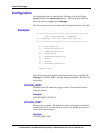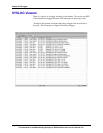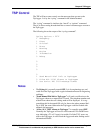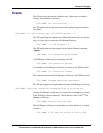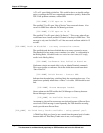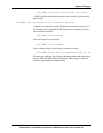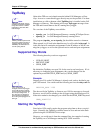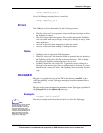
Chapter 8 TSPLogger
CPSEE_TSP500 User Guide Version 4.0 Page 8-7
This document is confidential and proprietary to SER Solutions and is not for external use.
TSP Control
The TSP will have some control over the messages that are sent to the
TspLogger. It is by the “syslog” command in the AdminTerminal.
The “syslog” command is similar to the “install” or “options” command.
That is, it allows setting hexadecimal bits to control what messages are sent to
the TspLogger.
The following shows the output of the “syslog command”.
Syslog Options = 207f
1 Emergency
1 Alert
1 Critical
1 Error
1 Warning
1 Notice
1 Information
0 Debug
0
0
0
0
0
1 Send Manual Dial Info to TspLogger
0 Allow ALL T1/E1 Alarms to TspLogger
0 Use Strict RFC 3164 message format
Notes
•The Debug bit is normally turned OFF. It is for engineering use, and
could flood the TspLogger with cryptic information meant for diagnosing
problems.
• “Send Manual Dial Info to TspLogger” will send a notification to the
TspLogger whenever a manual dial is issued. The telephone number and
station from where the call is being made will be displayed. It is sug-
gested that this bit be turned ON only for those sites where manual dial-
ing is NOT the norm. Otherwise the TspLogger could be flooded with
manuals dial messages.
• “Allow ALL T1/E1 Alarms to TspLogger” is normally turned OFF.
Normally the TspLogger will receive a de-bounced UP or DOWN mes-
sage indicating a T1 or E1 span is in trouble. If all the T1E1 errors are
sent to the TspLogger, it could flood the logger and make finding useful
information difficult.








